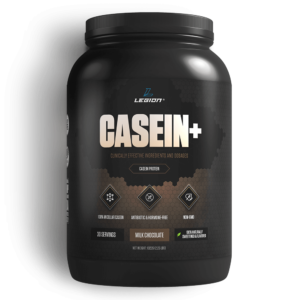The Importance of Physical Fitness
Physical fitness is the state of being in good health and capable of performing daily activities with vigor and energy. It encompasses several components such as cardiovascular endurance, muscular strength, flexibility, and body composition. Exercise plays a pivotal role in achieving and maintaining physical fitness.
Understanding Exercise and Physical Activity
Exercise is a subset of physical activity that is structured, planned, and repetitive with the aim of improving or maintaining physical fitness. Physical activity, on the other hand, includes any bodily movement produced by skeletal muscles that result in energy expenditure.
Benefits of Regular Exercise
Enhances Cardiovascular Health
Regular exercise strengthens the heart, improves blood circulation, and lowers the risk of heart disease, high blood pressure, and stroke.
Boosts Metabolism and Weight Management
Engaging in regular physical activity increases metabolism, helping to burn calories and maintain a healthy weight.
Strengthens Muscles and Bones
Exercise, particularly resistance training, helps build and strengthen muscles and bones, reducing the risk of osteoporosis and promoting better physical strength and stability.
Improves Flexibility and Balance
Incorporating exercises that focus on flexibility and balance, such as yoga and tai chi, enhances joint mobility, coordination, and reduces the risk of falls.
Enhances Mental Health and Mood
Exercise stimulates the release of endorphins, also known as "feel-good" hormones, which promote a positive mood, reduce stress, anxiety, and symptoms of depression.
Reduces the Risk of Chronic Diseases
Regular exercise physical helps lower the risk of chronic diseases, including type 2 diabetes, certain cancers, and metabolic syndrome.
Incorporating Exercise into Your Daily Routine
Choosing the Right Exercise Routine
Select an exercise routine that aligns with your goals, preferences, and physical capabilities. Consider a combination of cardiovascular exercises, strength training, and flexibility exercises.
Setting Realistic Goals
Set achievable goals that motivate you to stay consistent and track your progress. Start with small, attainable milestones and gradually increase the intensity and duration of your workouts.
Finding Motivation and Overcoming Barriers
Discover activities you enjoy and find a workout buddy or join exercise classes to stay motivated. Overcome barriers such as lack of time or access to a gym by incorporating physical activity into your daily routine.
Creating a Safe and Effective Exercise Plan
Consult with a healthcare professional or a certified fitness trainer to design an exercise plan that suits your specific needs and ensures safety. Gradually progress and allow for rest and recovery days.
Making Exercise Enjoyable and Sustainable
Exploring Different Types of Exercise
Try various types of exercise to keep your workouts exciting and prevent boredom. Options include running, swimming, cycling, dancing, hiking, and more.
Engaging in Social Activities and Group Exercises
Participate in group exercises or sports activities to connect with others and enhance social well-being while reaping the benefits of physical activity.
Incorporating Variety into Your Workouts
Include a mix of cardiovascular exercises, strength training, and flexibility exercises to engage different muscle groups and promote overall fitness.
Listening to Your Body and Resting When Needed
Pay attention to your body's signals and take rest days or modify your workouts if you experience pain, fatigue, or excessive soreness. Resting is crucial for recovery and injury prevention.
Exercise for Different Age Groups
Exercise for Children and Adolescents
Encourage children and adolescents to engage in age-appropriate physical activities such as sports, active play, and organized physical education classes to promote health fitness growth and development.
Exercise for Adults
For adults, a combination of aerobic exercise, strength training, and flexibility exercises helps maintain physical fitness, manage weight, and reduce the risk of chronic diseases.
Exercise for Seniors
Older adults should focus on exercises that improve balance, flexibility, and strength to maintain independence, prevent falls, and manage chronic conditions associated with aging.
Exercise and its Impact on Mental Health
Reducing Stress and Anxiety
Exercise acts as a natural stress reliever by reducing stress hormones and increasing the production of endorphins, helping alleviate symptoms of anxiety and improving overall mental well-being.
Enhancing Cognitive Function
Regular physical activity boosts health and fitness, enhances memory, improves focus, and reduces the risk of cognitive decline and neurodegenerative diseases.
Improving Sleep Quality
Engaging in exercise promotes better sleep quality by regulating sleep patterns, reducing insomnia symptoms, and improving overall sleep duration and efficiency.
Boosting Self-esteem and Body Image
Exercise enhances self-esteem and body image by improving physical appearance, increasing self-confidence, and promoting a positive perception of oneself.
Exercise and Longevity
The Relationship Between Exercise and Aging
Regular exercise has been linked to increased longevity and a reduced risk of premature death. It promotes healthy aging by maintaining physical and mental health.
Slowing Down the Aging Process
Exercise helps counteract the effects of aging by preserving muscle mass, reducing the risk of age-related diseases, and improving overall vitality.
Promoting Healthy Aging
By improving cardiovascular health benefits of exercise, bone density, flexibility, and cognitive function, exercise promotes healthy aging and enables older adults to maintain an active and independent lifestyle.
Exercise and Disease Prevention
Reducing the Risk of Heart Disease
Regular exercise lowers the risk of heart disease by improving cholesterol levels, reducing blood pressure, and maintaining a healthy weight.
Lowering the Risk of Type 2 Diabetes
Physical activity helps control blood sugar levels, improve insulin sensitivity, and reduce the risk of developing type 2 diabetes.
Preventing Osteoporosis
Weight-bearing exercises, such as walking or weightlifting, help build and maintain bone density, reducing the risk of osteoporosis and fractures.
Managing Chronic Pain
Exercise can alleviate chronic pain by improving muscle strength and flexibility, reducing inflammation, and releasing endorphins, which act as natural painkillers.
Exercise for Weight Management
The Role of Exercise in Weight Loss
Regular exercise increases calorie expenditure, aids in weight loss, and helps maintain a healthy weight by balancing energy intake and expenditure.
Building Lean Muscle Mass
Incorporating strength training exercises into your routine helps build lean muscle mass, which contributes to a higher metabolic rate and supports weight management.
Combating Obesity
Exercise plays a crucial role in preventing and treating obesity by burning calories, reducing body fat, and improving overall metabolic health.
Exercise and Energy Levels
Increasing Stamina and Endurance
Regular exercise improves cardiovascular fitness, enhances oxygen utilization, and boosts stamina and endurance, leading to increased energy levels throughout the day.
Improving Oxygen and Nutrient Delivery
Exercise improves blood circulation, delivering oxygen and essential nutrients to the body's tissues, which contributes to enhanced energy levels and overall vitality.
Combating Fatigue and Boosting Productivity
Engaging in physical activity releases endorphins, reduces stress, and combats fatigue, resulting in improved productivity and mental alertness.
Exercise and Immune System Health
Strengthening the Immune System
Regular exercise improves immune system function by increasing the circulation of immune cells, reducing inflammation, and promoting better overall immune health.
Reducing the Risk of Infections and Illnesses
Physical activity helps reduce the risk of common illnesses, such as colds and flu, by enhancing the body's defense mechanisms and immune response.
Enhancing Recovery Time
Exercise supports faster recovery from illness or surgery by improving blood flow, aiding in the removal of waste products, and promoting tissue healing.
Exercise and Rehabilitation
Physical Therapy and Exercise
Exercise is a vital component of physical therapy, aiding in injury rehabilitation, improving range of motion, strengthening muscles, and restoring mobility.
Exercise for Injury Prevention
Regular exercise helps prevent injuries by strengthening muscles, improving joint stability, and enhancing flexibility, reducing the risk of accidents and falls.
Exercise for Injury Recovery
Under the guidance of healthcare professionals, specific exercises can aid in the recovery process, restoring strength, mobility, and function after an injury.
Exercise and Pregnancy
Benefits of Exercise During Pregnancy
Exercise during pregnancy offers numerous benefits, including improved mood, reduced pregnancy discomfort, enhanced stamina, and reduced risk of gestational diabetes.
Safe and Recommended Exercises for Pregnant Women
Low-impact exercises such as walking, swimming, prenatal yoga, and modified strength training are generally safe and beneficial for pregnant women.
Postpartum Exercise
Gradually resuming exercise after childbirth can aid in postpartum recovery, restoring strength, boosting energy levels, and promoting overall well-being.
Exercise and Social Connections
Joining Exercise Clubs or Classes
Participating in exercise clubs, fitness classes, or sports activities provides an opportunity to meet like-minded individuals, form connections, and enhance social well-being.
Engaging in Team Sports
Team sports promote camaraderie, teamwork, and social interaction, while also providing the physical benefits of exercise.
Connecting with Others Through Physical Activity
Engaging in physical activities with friends, family, or colleagues can strengthen relationships, foster a sense of community, and make exercise more enjoyable.
Regular exercise is an integral part of maintaining and improving physical health. By incorporating exercise into our daily routines, we can reap numerous benefits, including enhanced cardiovascular health, weight management, improved mental well-being, disease prevention, and increased longevity. Regardless of age or fitness level, finding enjoyable and sustainable forms of exercise is key to leading a healthy and active lifestyle.
.png)








 English (US) ·
English (US) ·